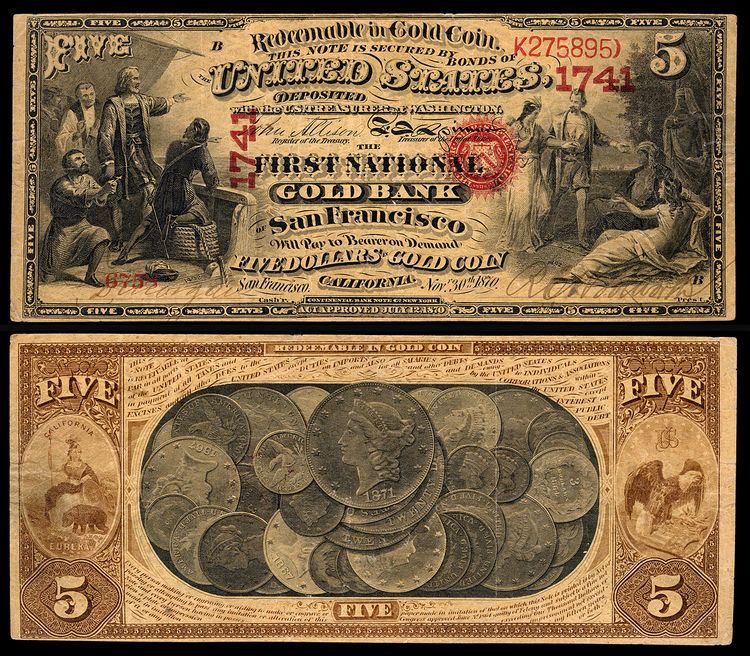Security features None Design Various | Years of printing 1870 – 1875 Design date 1870s | |
 | ||
Value $5, $10, $20, $50, $100, and $500 Design Ornamental with an array of United States gold coins | ||
National gold bank notes (NGBN), issued by nine national gold banks in California in the 1870s and 1880s, were national bank notes redeemable in gold. Printed on a yellow-tinted paper, six NGBN denominations circulated: $5, $10, $20, $50, $100, and $500. A $1,000 NGBN was designed and printed, but never issued. During the issuing period of national gold banks (1871–83), the U.S. Treasury issued 200,558 notes totaling $3,465,240. Today, national gold bank notes are very rare in the higher denominations (and unknown on some issuing banks) with condition generally falling in the good to fine range. Approximately 630 NGBNs are known to exist, and roughly 20 grade above "very fine".
History
The national gold bank notes were authorized under the provisions of the Currency Act of July 12, 1870. The series was a result of the California Gold Rush where gold coins were preferered in commerce. Ten national gold banks were charted, nine of them in California and one in Boston, Massachusetts.
The Kiddler Bank was the only bank to have $1,000 notes among others prepared however, no notes circulated from the bank.
